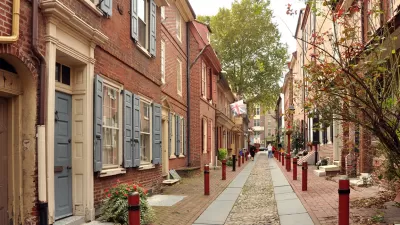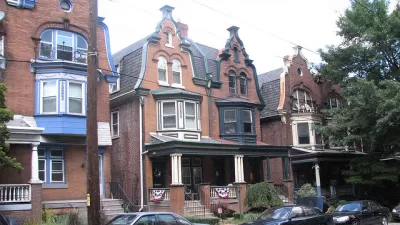How well do public spaces reflect the changing conceptions of "public good" in contemporary political discourse? The UPenn design community starts a challenging conversation.

PennPraxis, a design collaborative spawned by faculty and students of University of Pennsylvania's design school, will begin a program called the Praxis Dialogues, in partnership with PlanPhilly. The series of conversations will begin with an exploration of the public good and its meaning for the design community. The program is free and open to the public.
From the PlanPhilly blog:
"We are all, in some manner, motivated by public good...Public good in a full sense challenges us to envision shared spaces as not just those leftover once private goods are consumed. How does our shared, “public” realm express and live up to our political and social ideals? We owe it to ourselves, our collaborators, and our fellow citizens to be explicit about this ideal – and to be candid in our evaluation of how we succeed or fail to realize it."
Recognizing the public good as a political concept, the questions posed are challenging and will address such timely issues as access, stewardship, ownership, and cultural confidence. The emphasis will be on practice rather than lofty abstractions. "Ideas of public good are changeful, reflections of the politics of a moment. The current moment is messy."
Questions posed will also address the public good with respect specifically to Philadelphia and its current political environment.
FULL STORY: Praxis Dialogues: The 'public good' in practice

Pennsylvania Mall Conversion Bill Passes House
If passed, the bill would promote the adaptive reuse of defunct commercial buildings.

Planning for Accessibility: Proximity is More Important than Mobility
Accessibility-based planning minimizes the distance that people must travel to reach desired services and activities. Measured this way, increased density can provide more total benefits than increased speeds.

World's Largest Wildlife Overpass In the Works in Los Angeles County
Caltrans will soon close half of the 101 Freeway in order to continue construction of the Wallis Annenberg Wildlife Crossing near Agoura Hills in Los Angeles County.

Alaska Village Becomes Test Case for Climate Change Relocation
The Yup’ik village of Newtok is the first Alaska community to begin a full-scale relocation necessitated by the impacts of climate change. Another 31 Alaska communities remain vulnerable.

Amtrak Takes Lead on Texas Central Rail
The high-speed rail project isn’t a done deal, but if it moves forward, trains could begin operating in 2030.

Maine Approves Rent Relief Program
Legislators hope the assistance program will help struggling low-income households avoid eviction.
City of Costa Mesa
Licking County
Barrett Planning Group LLC
HUD's Office of Policy Development and Research
Mpact Transit + Community
HUD's Office of Policy Development and Research
Tufts University, Department of Urban and Environmental Policy & Planning
City of Universal City TX
ULI Northwest Arkansas
Urban Design for Planners 1: Software Tools
This six-course series explores essential urban design concepts using open source software and equips planners with the tools they need to participate fully in the urban design process.
Planning for Universal Design
Learn the tools for implementing Universal Design in planning regulations.

























